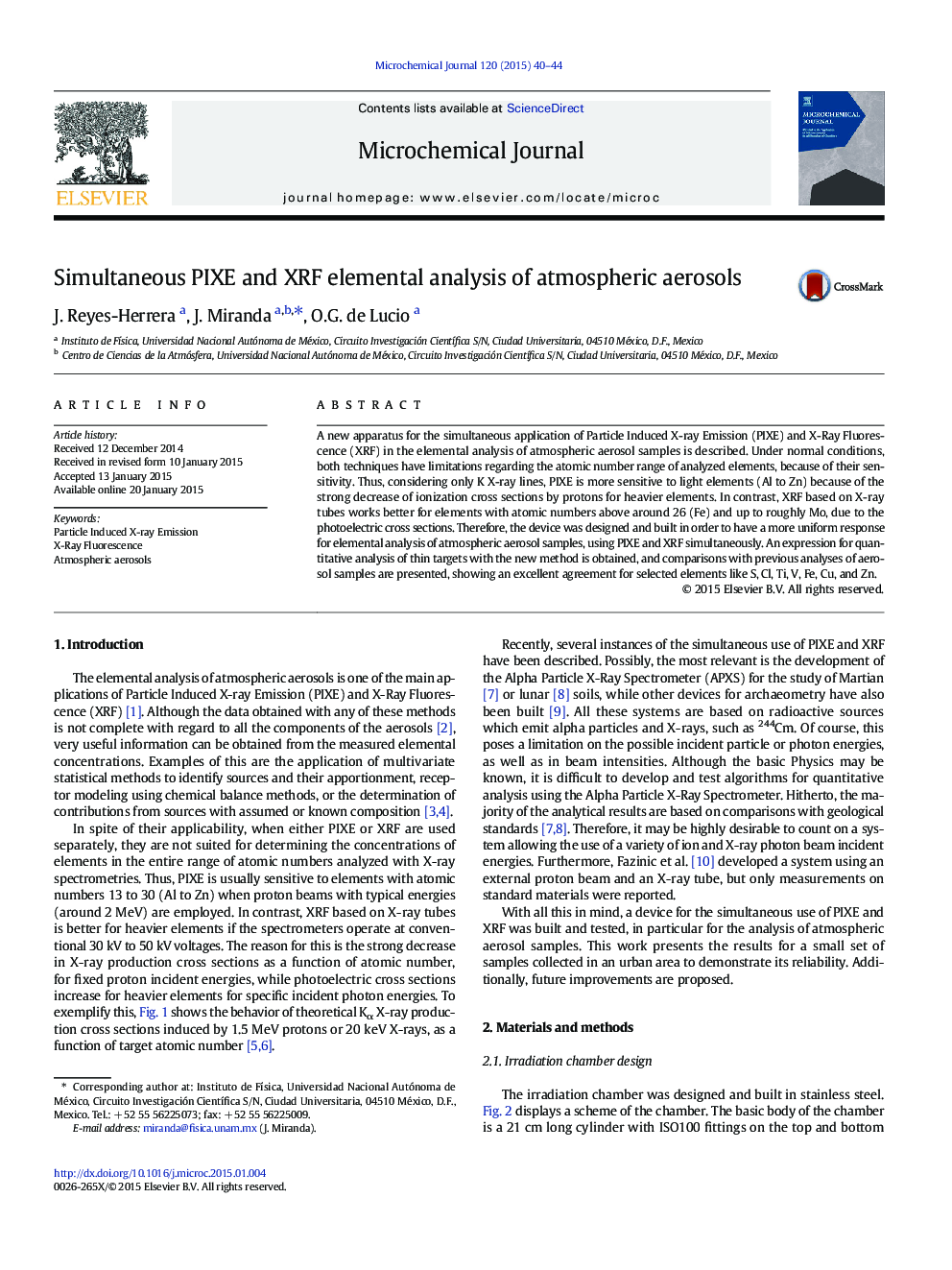| Article ID | Journal | Published Year | Pages | File Type |
|---|---|---|---|---|
| 1227709 | Microchemical Journal | 2015 | 5 Pages |
•The first in-vacuum PIXE + XRF system was developed.•A wider range of elements analyzed is obtained, as compared to separate PIXE or XRF.•Application in thin target quantitative analysis was demonstrated.•Atmospheric aerosol quantitative analyses were accurate.•The system is also useful for analysis of thick homogeneous samples.
A new apparatus for the simultaneous application of Particle Induced X-ray Emission (PIXE) and X-Ray Fluorescence (XRF) in the elemental analysis of atmospheric aerosol samples is described. Under normal conditions, both techniques have limitations regarding the atomic number range of analyzed elements, because of their sensitivity. Thus, considering only K X-ray lines, PIXE is more sensitive to light elements (Al to Zn) because of the strong decrease of ionization cross sections by protons for heavier elements. In contrast, XRF based on X-ray tubes works better for elements with atomic numbers above around 26 (Fe) and up to roughly Mo, due to the photoelectric cross sections. Therefore, the device was designed and built in order to have a more uniform response for elemental analysis of atmospheric aerosol samples, using PIXE and XRF simultaneously. An expression for quantitative analysis of thin targets with the new method is obtained, and comparisons with previous analyses of aerosol samples are presented, showing an excellent agreement for selected elements like S, Cl, Ti, V, Fe, Cu, and Zn.
